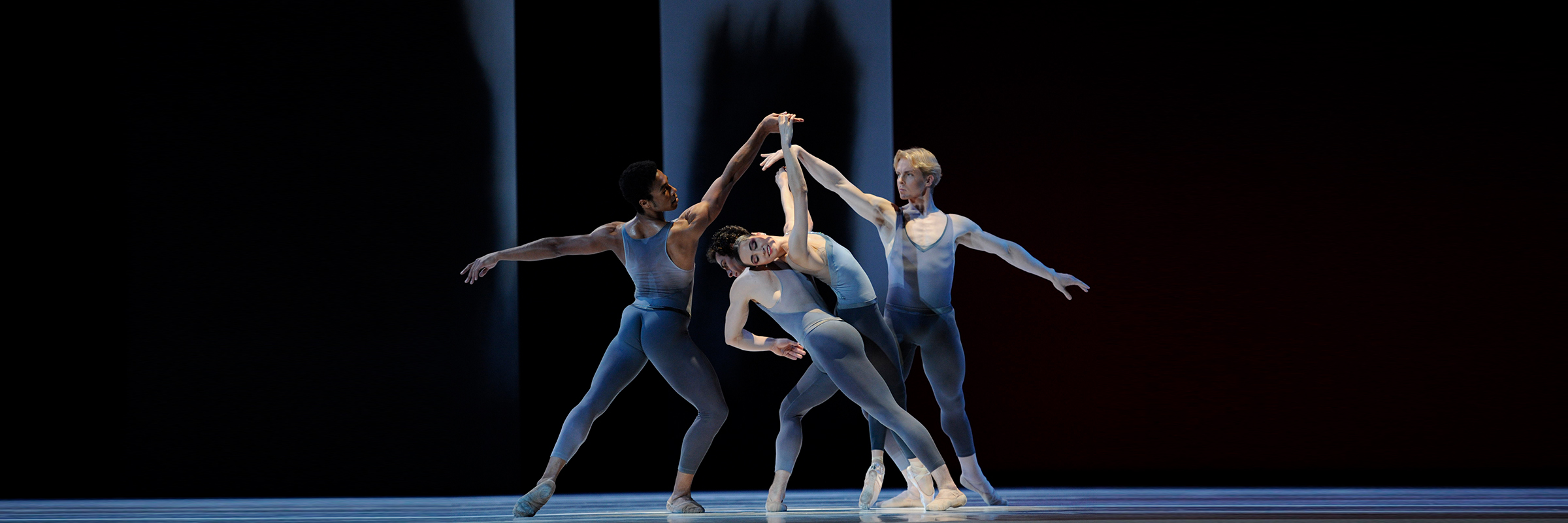Your Ultimate Guide to In Space & Time
Modernism, Drama, and Virtuosity: Program 03
What Is It? A chance to see three very different takes on ballet: from modernist abstraction to narrative drama to classical virtuosity.
Who’s It For? Anyone who likes minimalist music, 19th-century literature, or Degas paintings.
THE FIFTH SEASON

What Am I Seeing? The Fifth Season, choreographed by SF Ballet Artistic Director and Principal Choreographer Helgi Tomasson in 2006, is a study in contrasts. Cool, sophisticated movements and simple costumes coexist with passionate interludes; minimalist music with romantic melodies. Divided into six movements and featuring six principal dancers who dance together in different combinations, this ballet creates an abstract landscape of shifting moods.
What Am I Hearing? Karl Jenkins’ String Quartet No. 2 and the largo from Palladio. Tomasson knew he wanted to choreograph to the String Quartet, but wanted six movements in the ballet, so he added in the largo.
What Should I Look For? Look for the central pas de deux to the Palladio largo—it’s full of lyricism and longing. And note how different each of the sections of the ballet are—how do these contrasts make you feel?
SNOWBLIND

What Am I Seeing? British choreographer Cathy Marston’s unique blend of literature, movement, and emotion. Known in Europe for her narrative ballets inspired by literature, Marston decided to use an American story as the starting point for this ballet: Edith Wharton’s short story Ethan Frome. For those of us who never read Ethan Frome in high-school English here’s a quick synopsis: Married man in New England falls in love with his hypochondriac wife’s cousin—who also happens to be his maid.
What Am I Hearing? A mix of music from Amy Beach, Arthur Foote, and Arvo Pärt arranged by composer Phillip Feeney. Beach and Foote were both part of the “Boston Six,” a group of composers working in the late 19th and early 20th centuries in New England. Working at the same time as Edith Wharton, these composers were key to the development of American classical music.
What Should I Look For? Look for the way that the main characters’ movement is driven by their emotions—Marston starts her process more like a theatrical director, letting the character’s thoughts dictate the movement language. And watch the corps de ballet in this work; they alternately represent the cold and snow of New England and the central characters’ emotions.
ETUDES

What Am I Seeing? Choreographed in 1948 by Danish choreographer Harald Lander, Etudes is an ode to classical ballet’s history and form. A series of studies, or “études,” this ballet puts its dancers through their paces. Beginning with exercises at the barre, then foraying into ballet’s Romantic Era past, the ballet ends with a spectacular display of virtuosity and technique.
What Am I Hearing? A variety of piano études by Carl Czerny, arranged and orchestrated by Knudaage Riisager. These piano pieces were created to challenge and train students, making them a clever match for a ballet about ballet training.
What Should I Look For? The central ballerina who flits in and out throughout the ballet, sometimes in a short, classical tutu and sometimes in a longer, Romantic-era one. And for the way that the steps you see later in the ballet—the jumps and turns—relate to the earlier exercises you saw at the barre. If you can make that connection, it may well change how you watch all ballets.
Header Image: San Francisco Ballet in Tomasson’s The Fifth Season // © Erik Tomasson








